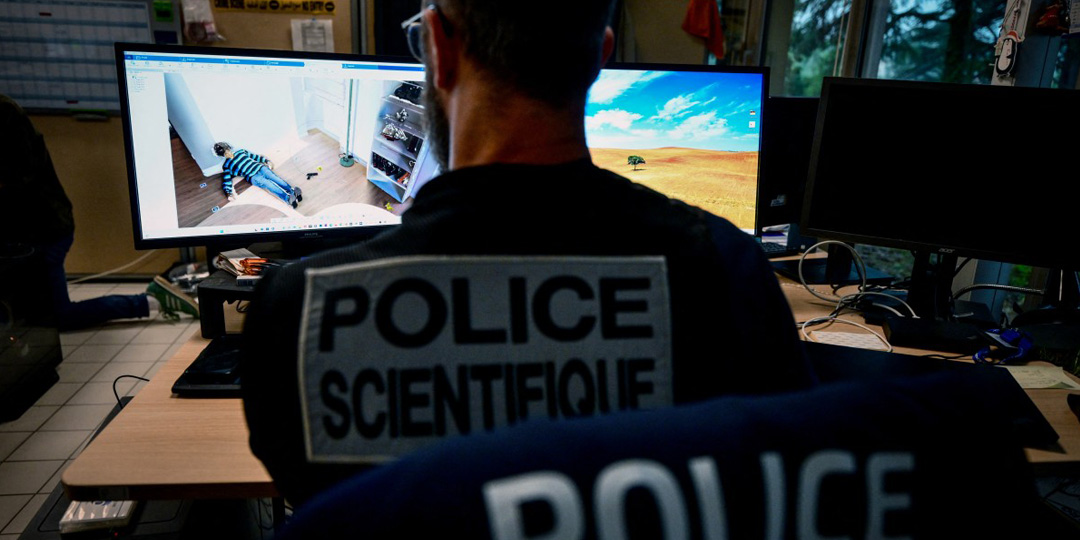The forensic department of the French police, located near Lyon, provides investigators with a unique service: 3D imagery that allows them to enter a crime scene as if they were physically present.
In a simulated case involving the shooting death of a man and the stabbing injury of another, a police officer views a 3D model of an apartment on a screen with three options: an empty crime scene, the investigation results (including a body, blood stains, weapons, and other evidence), and a video clip showing a reenactment of the fight that led to the murder.
Officer Grégory, who did not provide his last name, explains, “Our job is to make the facts easier to understand.”
He adds, “We deal with all major crime scenes,” including attacks and major criminal cases, even cold cases that have not been solved.
His team was involved in the investigation following the assassination of a teacher by a jihadist in Arras (north) in October 2023, and after a bombing in Lyon in 2019 that injured about 15 people — using 3D reconstruction to verify the suspect’s claims.
For large cases, the “Crime Scene Documentation Team” is brought in — a small unit created about ten years ago consisting of just four members, including a woman specialized in 3D architectural modeling with a background in video game design.
Despite its small size, the unit is equipped with advanced tools, including two laser scanners with cameras that capture 3D environments and generate a point cloud representation. This point cloud is extremely precise — accurate to within 1 millimeter from a distance of 10 meters — allowing the crime scene to appear quickly and clearly on screen.
From Traditional Photography to 3D Models
The unit also uses a handheld laser scanner, 360-degree cameras, various types of drones (multispectral, thermal, and traditional), and iPad Pros capable of performing such digital conversions.
Grégory explains, “I started working in the police more than 20 years ago taking traditional photographs, and now we’ve reached this stage.”
The locations themselves remain unchanged. He says, “Even if the events occurred 20 years ago, the house” — or rather, the crime scene — “stays the same. We can scan what’s there now and rework it to match the findings from back then.”
For example, a group of 150 compiled photos can reproduce a highly detailed 3D model of something like a footprint.
As a result, investigators can visit the crime scene from their computers, zoom in on evidence, take measurements, and navigate through the environment as if walking through it — changing angles to view it from multiple perspectives.
The team also assists with animated reconstructions that can be used in court or to simplify the technical expert’s role. In the case of the 2018 Strasbourg Christmas market attack that killed five people, the team was tasked with tracing the path of one of the suspects.
This lab is only a small part of France’s national forensic science agency, which oversees more than 4,000 personnel, including 3,140 scientists.
From a simple saline swab to cutting-edge technology, police officers and technicians conduct more than 1.1 million analyses each year and handle about 310,000 pieces of seized evidence.
In Écully, a suburb of Lyon, where 1,200 of these personnel work, teams collaborate across specialties: fingerprint trace labs, tracking dogs, the firearms (ballistics) division, and various units dedicated to identifying individuals.
Mla/Rk/BH
Agence France-Presse ©








